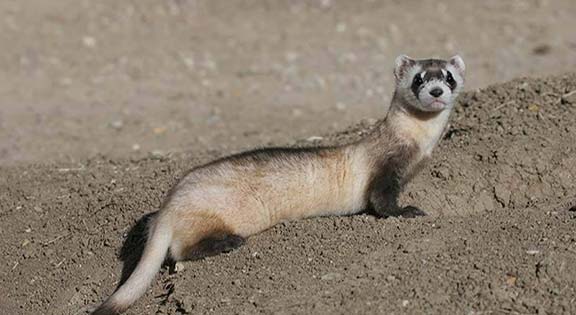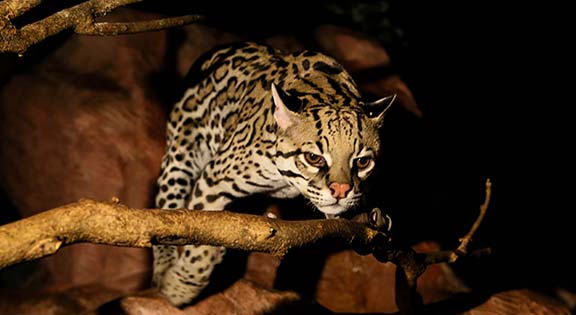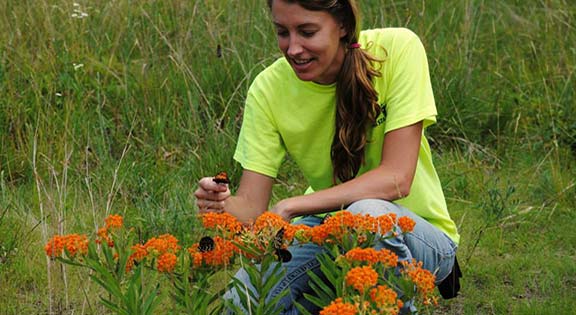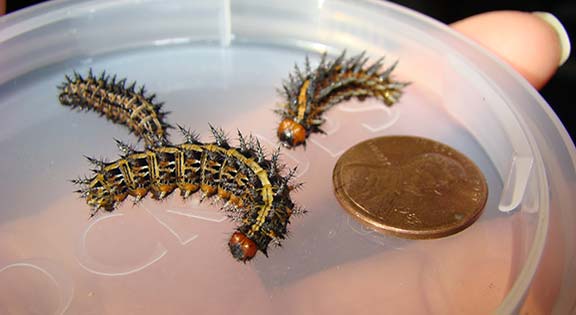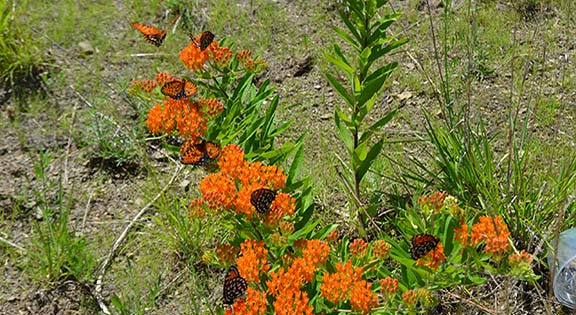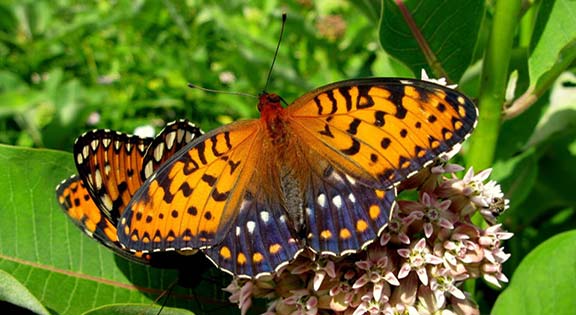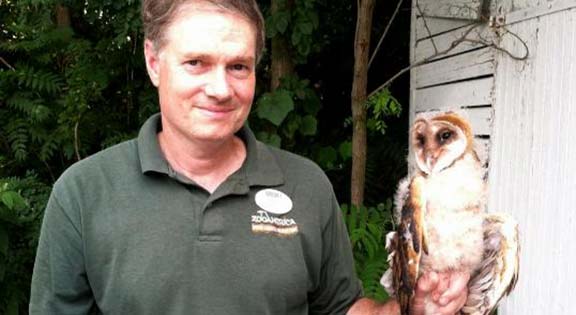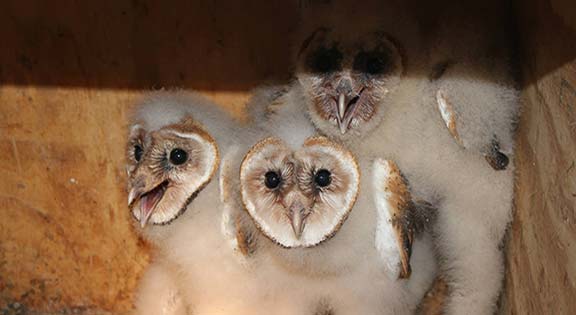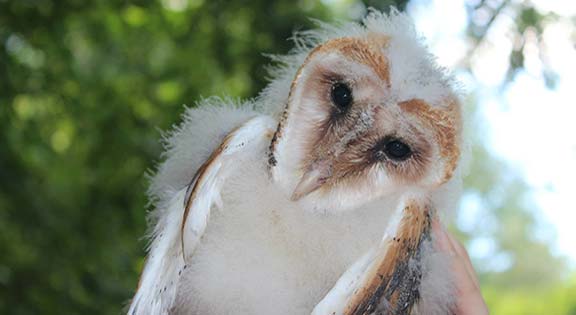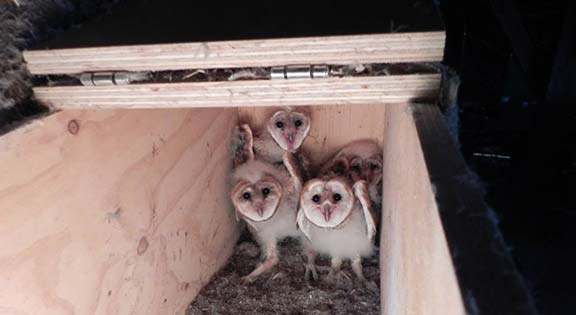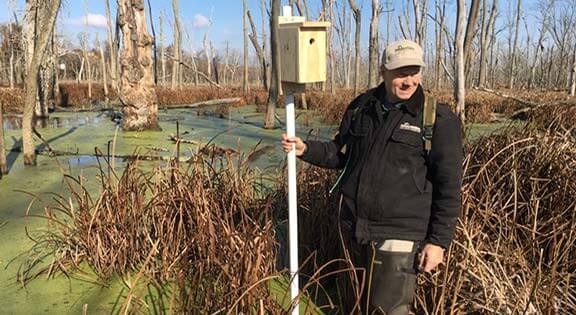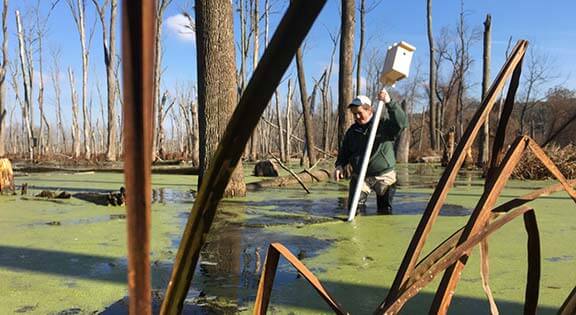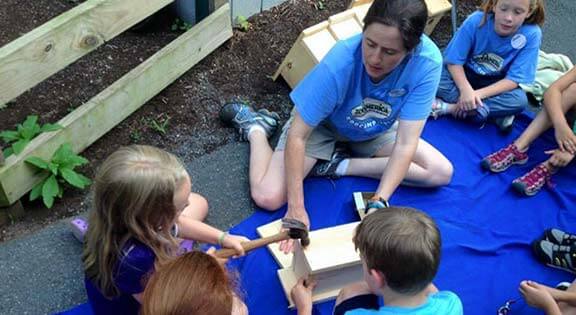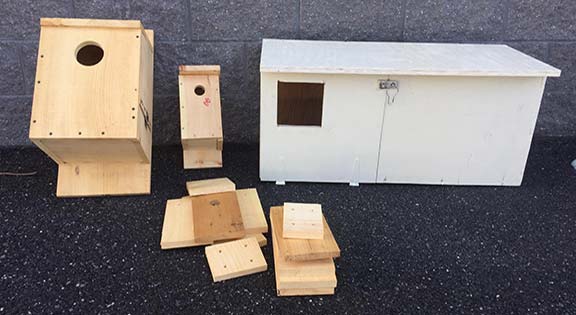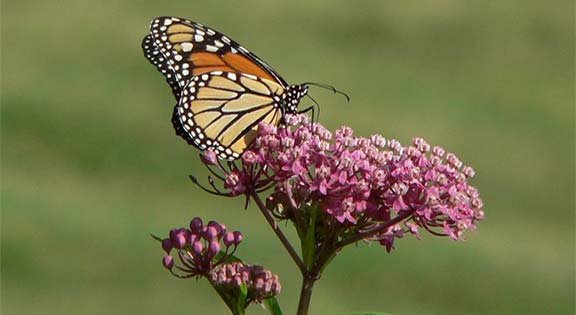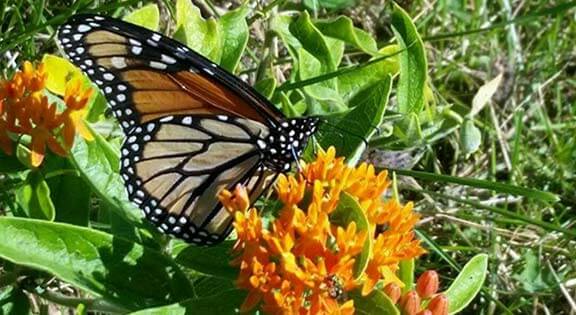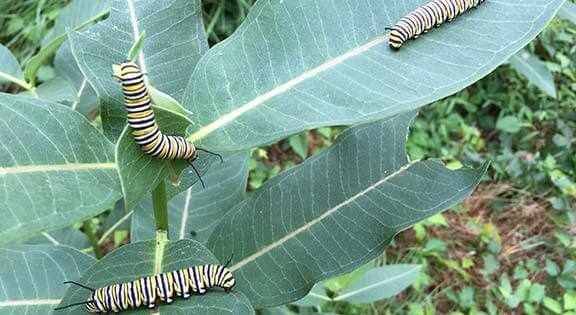Conservation
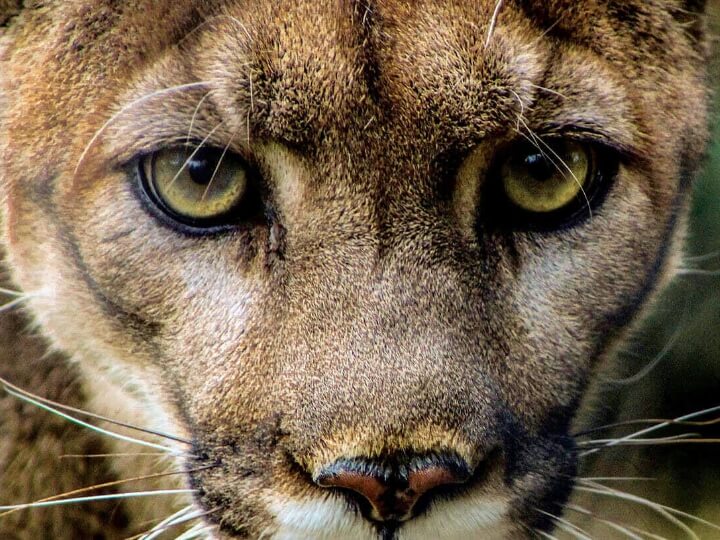
At ZooAmerica®, we believe it is our responsibility to protect, promote, and encourage the conservation of wildlife, natural resources, and habitats. We actively support conservation efforts through financial commitments and donations to the Conservation Grant Fund of the Association Of Zoos And Aquariums. We also work locally, involving ourselves in programs that benefit the species of our state, our country, our continent, and our world.
Check out some of the recent conservation programs we've established and implemented to help make this world a better place that will last for generations to come!
Species Survival Plan Programs
ZooAmerica® participates in 11 Species Survival Plan® programs. The purpose of these SSP programs is to oversee the population management of select species within the Association of Zoos and Aquariums member institutions and to enhance conservation of these species in the wild.
Each SSP program coordinates the individual activities of participating member institutions through a variety of species conservation, research, husbandry, management, and educational initiatives. These plans are designed to maintain a healthy, genetically diverse and demographically stable population for the long-term future.
Regal Fritillary Butterfly
Since 2011, ZooAmerica has been involved in a cooperative project with Fort Indiantown Gap to raise Regal Fritillary butterflies for release into new areas of the state. The Regal Fritillary is a species of great conservation concern. They have disappeared from their entire historic range east of Indiana, except for a single population found at Fort Indiantown Gap. At this military reservation, about ten miles north of Hershey, Regal Fritillaries thrive in the prairie-like landscape of the firing ranges.
Each year in late August, ZooAmerica staff collects a small number of female Fritillaries from these ranges as a source of eggs for our butterfly-rearing project. A single female can lay over 2,000 eggs. The newly hatched caterpillars consume their own eggshells before going into hibernation for the fall and winter. At ZooAmerica, we overwinter some of the hatchling caterpillars, both indoors in refrigerators in our butterfly lab, and also outdoors in beds of violets, bluestem grasses, and nectar plants. The majority of hatchlings are released directly at one of our reintroduction sites. In early spring, the caterpillars awake from hibernation, grow rapidly on a diet of violet leaves, and pupate in about eighteen days.
Our outdoor setups are inside greenhouse frames in the Big Sky Country at ZooAmerica. In April, the frames are covered with mosquito netting to prevent parasitic wasps from reaching the caterpillars and to contain the adult butterflies until they can be transported to a release site. The netting is removed in the fall to prevent tearing from the weight of the snow. Adult Regal Fritillaries emerge from their chrysalides in mid-June through mid-July. If you are visiting ZooAmerica during that time, you may see some of the butterflies in the greenhouse enclosure or observe us working inside.
Partnering For Barn Owls Project
ZooAmerica has been placing barn owl nest boxes in a number of local barns, including many on Milton Hershey School property. Students have been involved in placing and monitoring these boxes. Some of the nest boxes are built by our summer zoo campers. Barn owl chicks from the nest boxes are banded by the Pennsylvania Game Commission as a part of their ongoing study of this vulnerable species. Pennsylvania's barn owl population has declined by nearly fifty percent since the 1980s. Habitat changes and the loss of suitable nest sites are thought to be the main factors in their decline. Each barn owl pair requires roughly one hundred acres of grassland in order to find enough rodents to feed their young. They are a valuable means of natural rodent control.
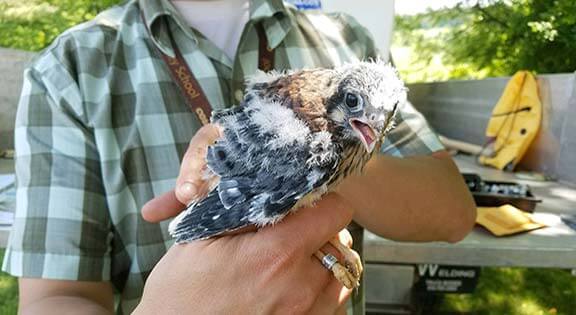
American Kestrels
Once one of the most common and familiar falcons in North America, American kestrel populations have dropped by nearly half over the last 45 years. Although scientists are unsure about the reasons for the decline, some of the theories include a decrease in the amount of foraging habitat and the number of suitable nest sites, changes in farming practices and the loss of agricultural areas, and changes to traditional habitats. As well as competition from European starlings, predation by Cooper's hawks, pesticides, and climate change.
Kestrels do not build their own nests. Instead, 4-6 eggs are laid in abandoned woodpecker holes or natural tree cavities. The practice of removing dead trees limits nest sites for the birds. Fortunately, kestrels will use manmade nest boxes, and placing these boxes in open habitat or farmland is known to boost kestrel numbers. It also allows the population to expand into previously unused locations.
ZooAmerica staff and ZooCamp participants construct kestrel nest boxes that are placed on local properties. The boxes are monitored for nesting activity, number of eggs laid, and the number of young successfully reared. The kestrels are banded for identification and research purposes. Information gathered from these nest sites will give us a better understanding of what may be causing declines in our local populations and throughout the northeast. Our combined efforts are contributing to the future of this small falcon, while teaching our campers about a local conservation project.
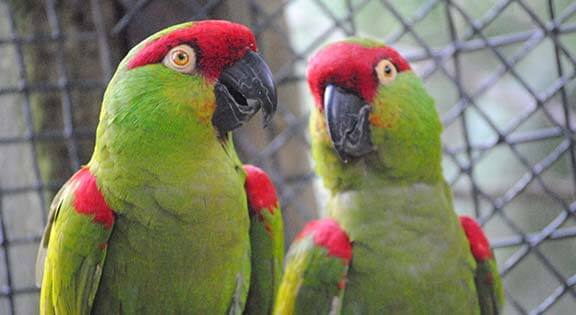
Thick-billed Parrots
ZooAmerica is home to seven endangered Thick-billed Parrots. These birds are located here in cooperation with the Species Survival Plan (SSP) coordinated by the Association of Zoos and Aquariums (AZA). The birds were selected and paired to provide the best genetic representation in offspring hatched in professional care. The AZA and SSP are working together to protect the thick-billed parrot habitat in Mexico where a number of parrots reside.
ZooAmerica has had success with thick-billed parrot breeding over the years. Eggs have hatched in 2001, 2011, 2013, 2014 and 2015. Our current and most prolific breeding pair may now be past breeding age. Sunny, the male that fathered chicks from 2011-2015, became the oldest breeding male in 2015 at 28 years of age. We keep the chicks until they are at least 5 years old. They are then sent to other zoos to breed, based on recommendations from the SSP. ZooAmerica also participates in research projects to learn more about thick-billed parrots. With so few birds remaining, every bit of knowledge gained is vital to the cause of saving their species.
Prothonotary Warbler Nest Box Project
Prothonotary Warblers nest in tree cavities near rivers and swamps. Nest boxes – specifically designed for this species of warbler – are constructed by zoo staff and campers. The boxes are placed at a local wooded swamp not far from ZooAmerica. They are the only cavity nesting warbler in eastern North America. Pennsylvania is near the northern limit of their range, and they are fairly rare in our state.
Competition for tree cavities, in suitable habitat, is a limiting factor in their population. By placing nest boxes with a 1 1/8 inch hole, which will exclude many larger cavity nesters, we hope to help this species gain a foothold in new areas of the state.
Bluebird Nest Box Project
Campers and staff at ZooCamp construct the nest boxes, which are then placed throughout central PA. ZooCamp has contributed to this project for fifteen years.
Eastern Bluebirds are cavity nesters, and thus are competing for a limited resource with other cavity nesting species. These include aggressive introduced species such as House Sparrows, and European Starlings. By placing and managing concentrations of nest boxes in suitable habitat, we can greatly increase the population of this beautiful iconic bird of open spaces.
Pollinator Garden
We have planted a meadow of milkweed and other wildflowers to attract monarch butterflies and other pollinators to ZooAmerica. Monarchs have been declining drastically due to various factors, including habitat loss and damage to their overwintering grounds in Mexico. The simplest of these threats to address is the availability of milkweed, which is the host plant of monarch caterpillars. Even small patches of milkweed planted by homeowners can have a beneficial impact for this imperiled species.
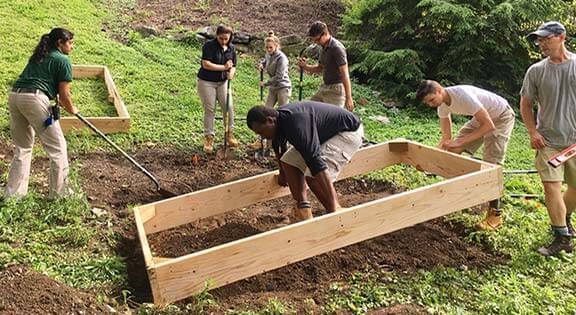
Raised Garden Beds
Two raised garden beds were constructed by students at the Milton Hershey School, our founder's legacy, that we continue to support in many ways. The students and staff at the MHS Environmental Center composted the organic soil. Rainwater is collected in the barrel alongside the Woodlands Education Center and gravity-fed down to the gardens to keep the soil moist. Our organic crops are harvested and fed to ZooAmerica animals to add variety to their diets and support their health.
